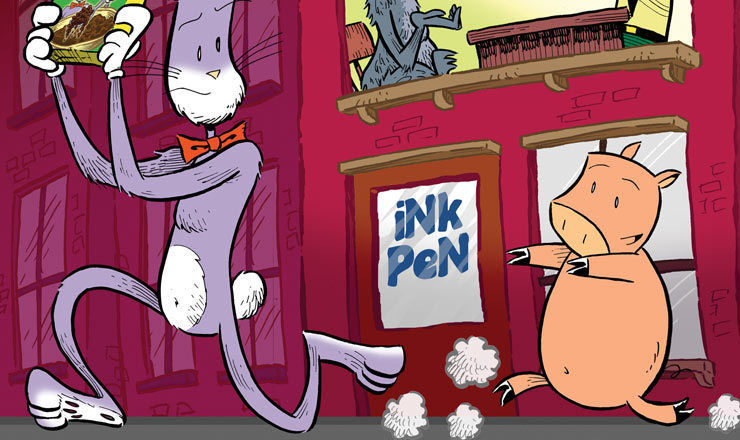Ink Pen by Phil Dunlap for March 30, 2014
Transcript:
Tyr: But if you buy me a drink, I'll make sure you get a spot! Ralston: Forget it, Tyr! You've already sold 12 spots tonight, and it's not even 7:00... Ragnarok - the end of the World! According to legend, the Giants will rise up and storm the gates of Asgard, waging an awful war with the mighty Norse gods that will leave both sides decimated! Jormungand, the terrible World Serpent will rise from his watery slumber in a final attempt to devour the Earth. Thor, the mightiest of the gods, will give his life to stop the leviathan! I myself will fall in battle slaying the ferocious hell-hound Garm, guardian to the gates of Nillheim, the realm of the underworld! Only two people will survive the cataclysm by hiding in the roots of Yggdrasil, the World Tree. The only thing uncertain is who those two will be!



Thor had 3 children, 2 boys 1 girl but no twins. In Norse mythology, largely recorded in Iceland from traditional material stemming from Scandinavia, numerous tales and information about Thor are provided. In these sources, Thor bears at least fourteen names, is the husband of the golden-haired goddess Sif, is the lover of the jötunn Járnsaxa, and is generally described as fierce-eyed, red-haired and red-bearded. With Sif, Thor fathered the goddess (and possible valkyrie) Þrúðr; with Járnsaxa, he fathered Magni; with a mother whose name is not recorded, he fathered Móði, and he is the stepfather of the god Ullr. The same sources list Thor as the son of the god Odin and the personified earth, Fjörgyn, and by way of Odin, Thor has numerous brothers. Thor has two servants, Þjálfi and Röskva, rides in a cart or chariot pulled by two goats, Tanngrisnir and Tanngnjóstr (that he eats and resurrects), and is ascribed three dwellings (Bilskirnir, Þrúðheimr, and Þrúðvangr). Thor wields the mountain-crushing hammer, Mjölnir, wears the belt Megingjörð and the iron gloves Járngreipr, and owns the staff Gríðarvölr. Thor’s exploits, including his relentless slaughter of his foes and fierce battles with the monstrous serpent Jörmungandr—and their foretold mutual deaths during the events of Ragnarök—are recorded throughout sources for Norse mythology.